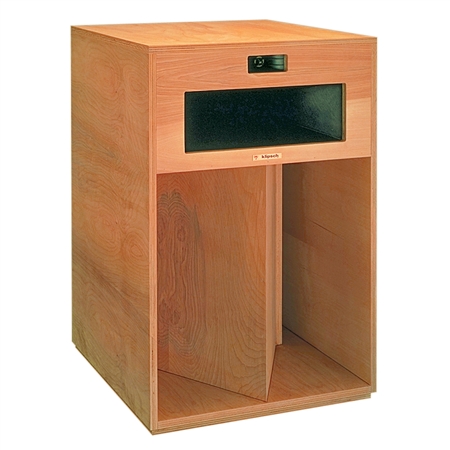watchnerd
Grand Contributor
No idea, it could also be limit of excursion.
I'd be curious if it could be measured in the crossover by itself using a dummy load.
No idea, it could also be limit of excursion.
Must have been the cables they used.Sorry guys but I have never heard a good one. From your comments they exist but all the ones I have heard over the years have the same problems and clearly from others comments in this thread I'm not alone.
Expectation bias? Why is it everyone blames it for everyone else, but won't believe it for themselves?I have heard the same thing over the years. "Wait until you hear THIS one!" And every time... sounds like horns.
I am with Sal ...Must have been the cables they used.
Expectation bias? Why is it everyone blames it for everyone else, but won't believe it for themselves?
Yep, You see a horn, so you hear a horn.I am with Sal ...
Must have been the cables they used.
Expectation bias? Why is it everyone blames it for everyone else, but won't believe it for themselves?
Of course - if there is any in the first place. It's just a theory I've developed, I couldn't find any other explanation why even very small active speakers like the Genelec 8020 show such great dynamics.I'd be curious if it could be measured in the crossover by itself using a dummy load.
Right, so everyone is clear the type of horn I refer to is this sort of thing, not a box speaker with a relatively small waveguide.
I have yet to hear a speaker along these lines that did not have significant colouration and directivity issues. I accept others experience may vary and there may be ones that are not coloured.

This is an interesting hypothesis about the crossovers. Passive crossovers obviously have downsides in terms of phase, but I'd never heard about compression.
How would one measure this? And what would one look for?
This is not correct. A passive crossover does not add compression.
Of the components used in a passive crossover, the inductors are most problematic. They have dc resistance, and can also have hysteresis causing inductance to change as funstion of current. But this does not cause compression, because the inductance gets lower with increased current, and the dc resistance does not change significantly. Resistance is also accounted for in the design. Using a bad inductor will show up as nonlinear distortion and a level-dependent change in frequency response.
Passive crossovers can also be made with linear and flat phase, with very steep slopes. It is just that it is not so easy to design.
Main drawbacks of passive are complex and difficult to design, expensive components, impossible to do delay. Part from those issues, a passive can perform just as good as any active dsp solution.
Compression in loudspeakers is manly caused by nonlinearities in the drivers - in the motor and suspension.
All of this is quite straight-forward to measure and verify.
The German audio mag Stereoplay tests for THD which also shows compression. They measure FR and distortion of the speaker at different SPLs (85/90/95/100 dB SPL). You can see compression when the FR curves are no longer 5 dB apart. This is accompanied by high distortion.
Amen on that. That is the number one reason the term "wave guide" have become so popular over the last couple decades. All the cupped hands nonsense that has been repeated since the acoustic suspension revolt of the 60s. Could people not hear what they gave away for a few hz of bass? Paul Klipsch used to walk around with a pin on his jacket that said BULLSHIT. LOLAs I see it, all are horns. If you decide to call it a waveguide, I see that purely as some kind of marketing stunt, to avoid the bad-horn label.
I auditioned those JBLs. I didn’t like them, at least in the store setup, which was pretty bad.
If you decide to call it a waveguide, I see that purely as some kind of marketing stunt, to avoid thebad-hornBat horn label.

What is a waveguide? There is a distinct difference...
It's @LTig 's idea, not mine.
thanks for the link!What is a waveguide? There is a distinct difference...
This is a very good white paper.What is a waveguide? There is a distinct difference...
